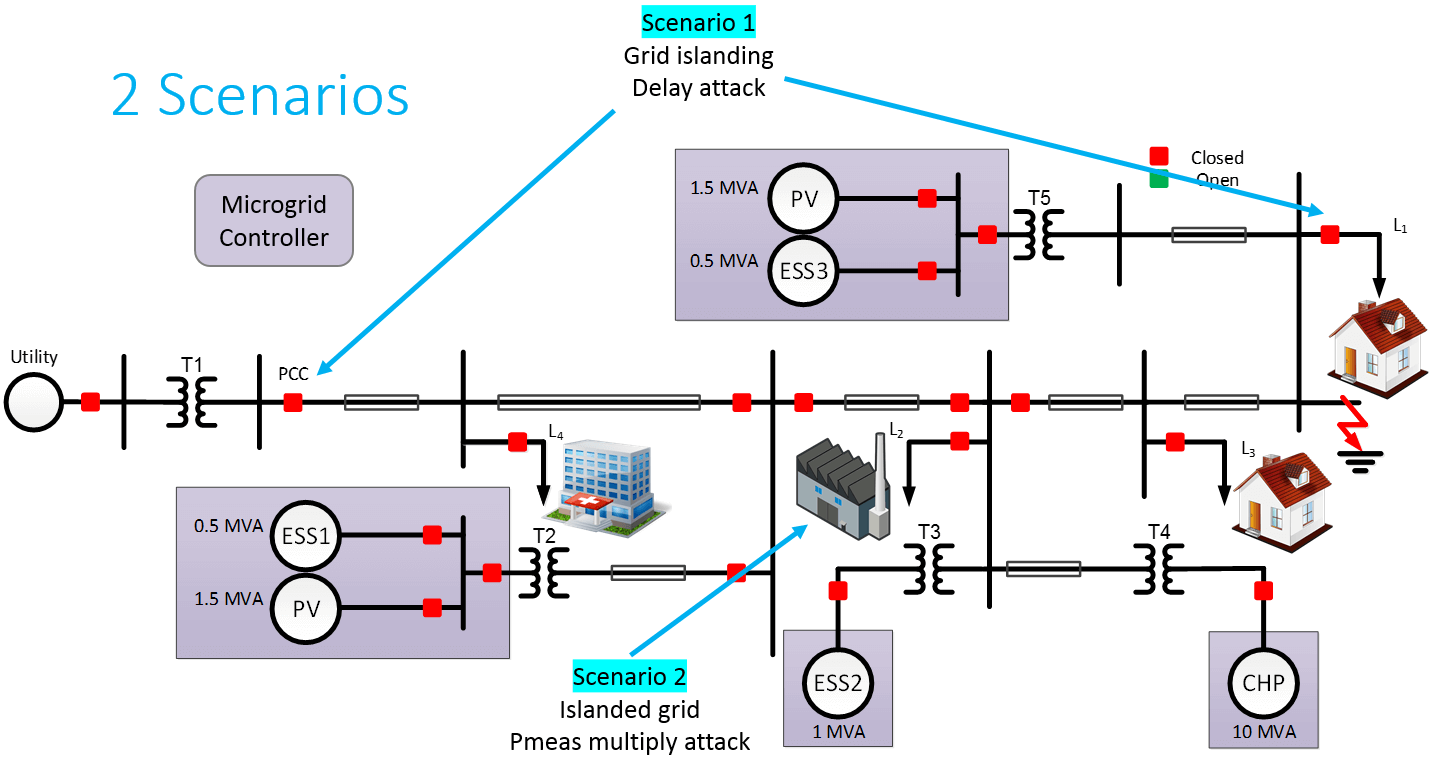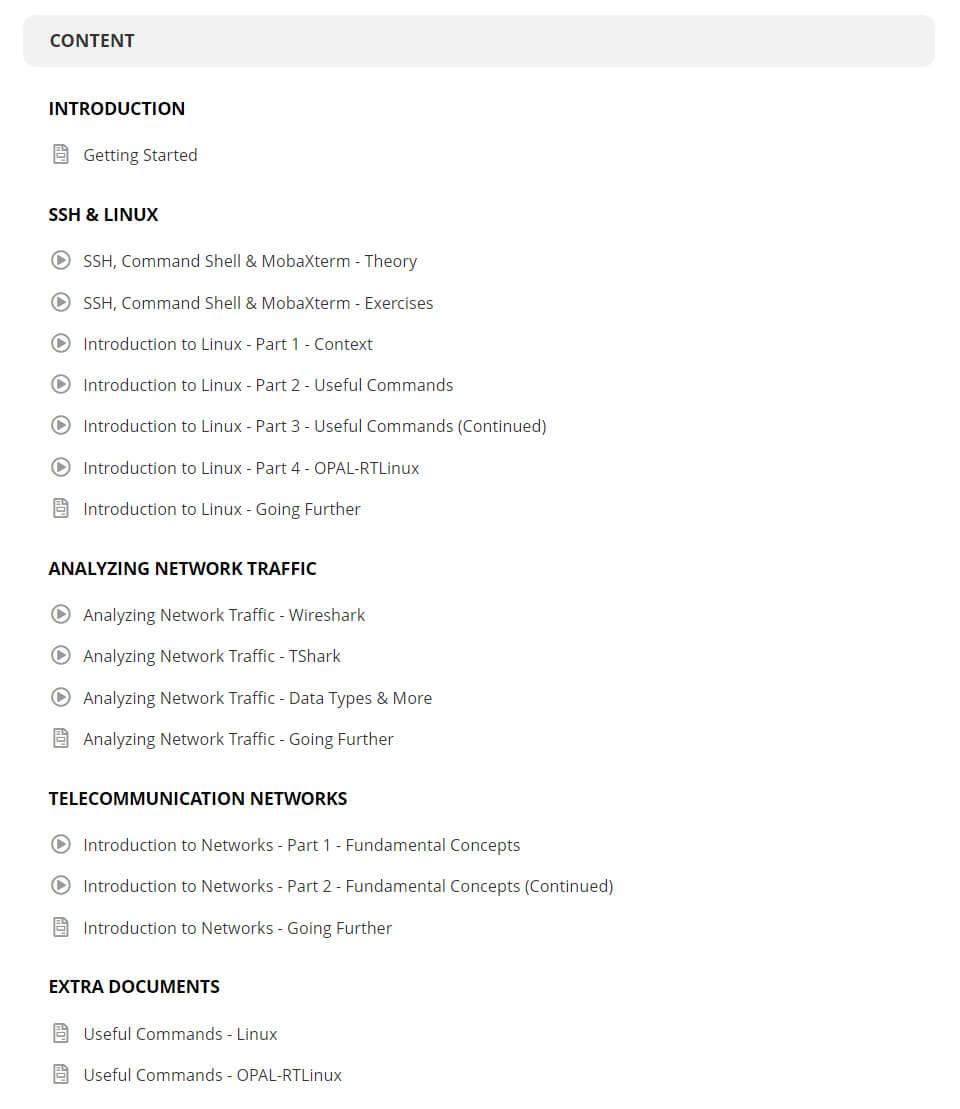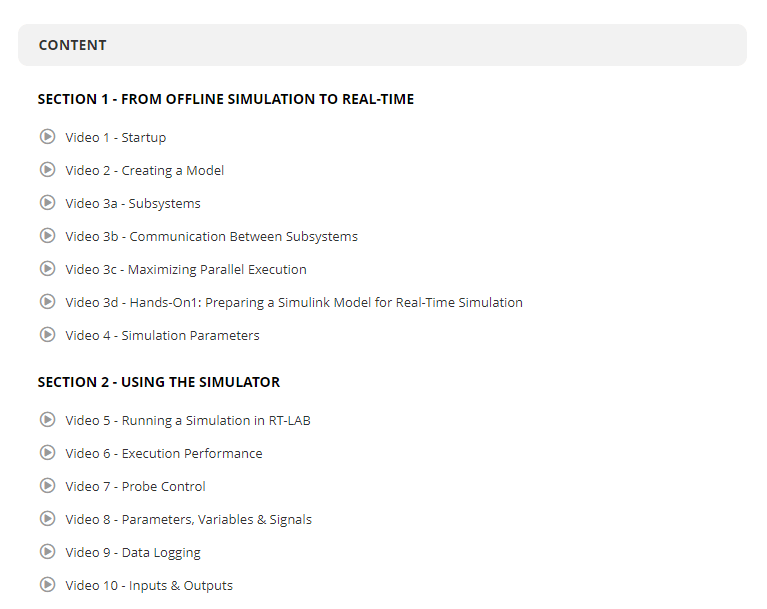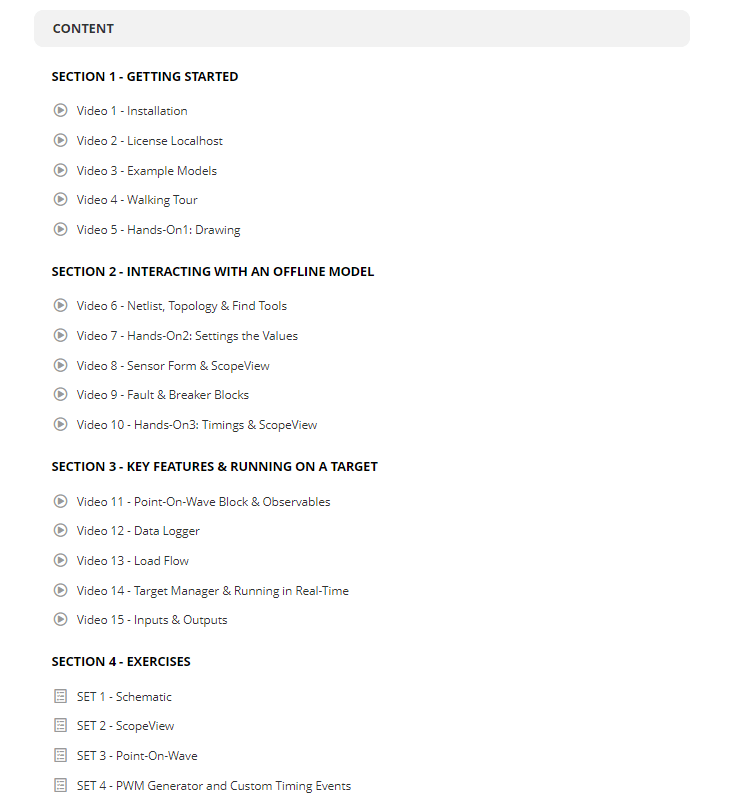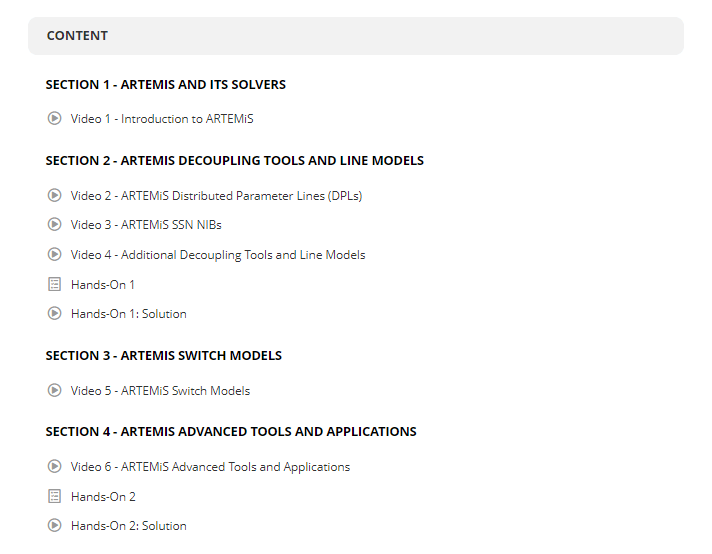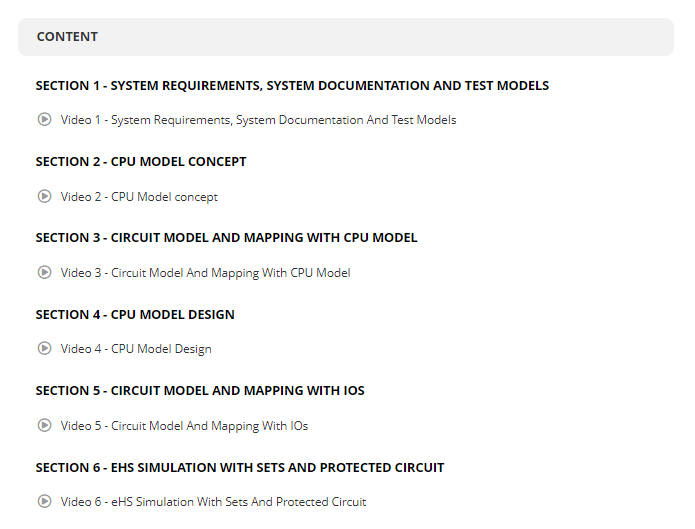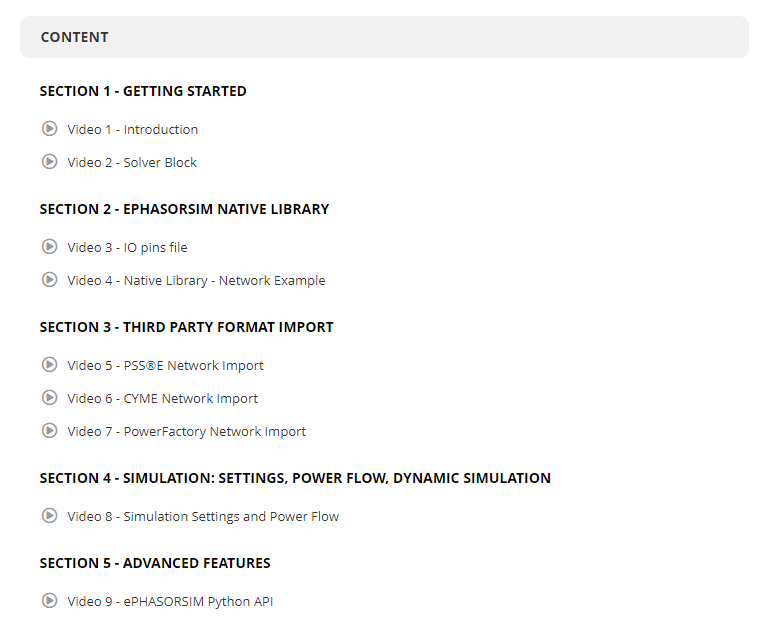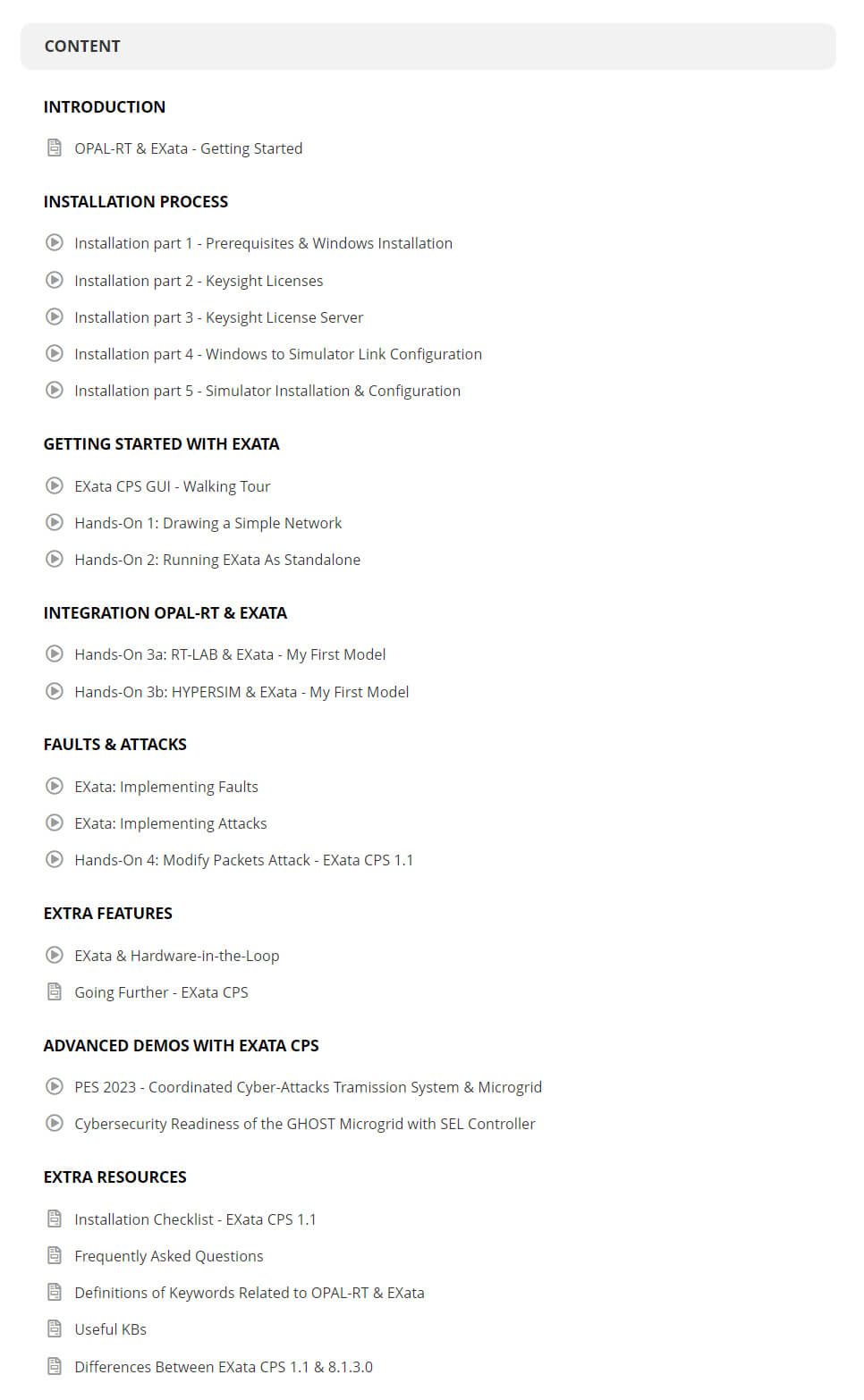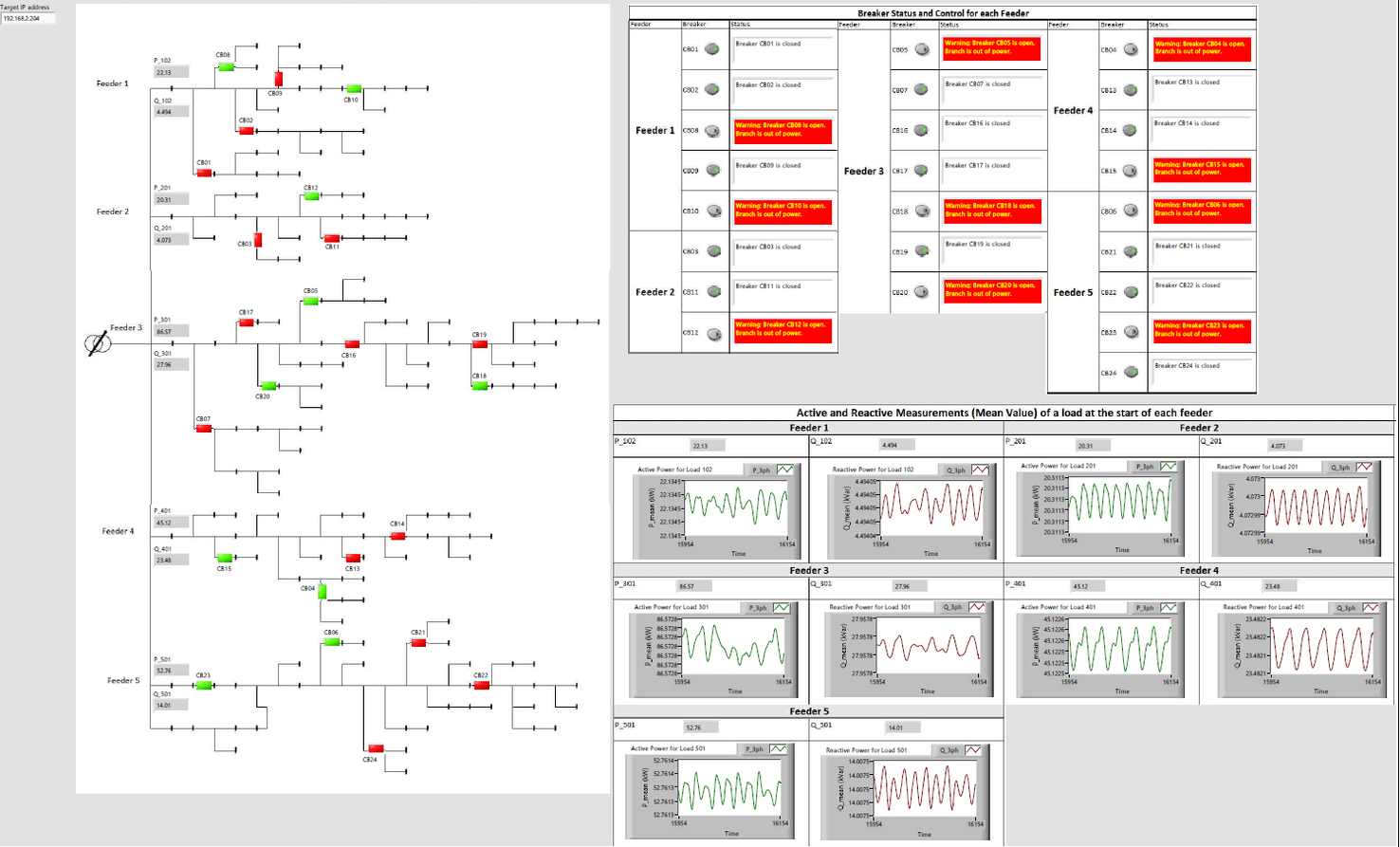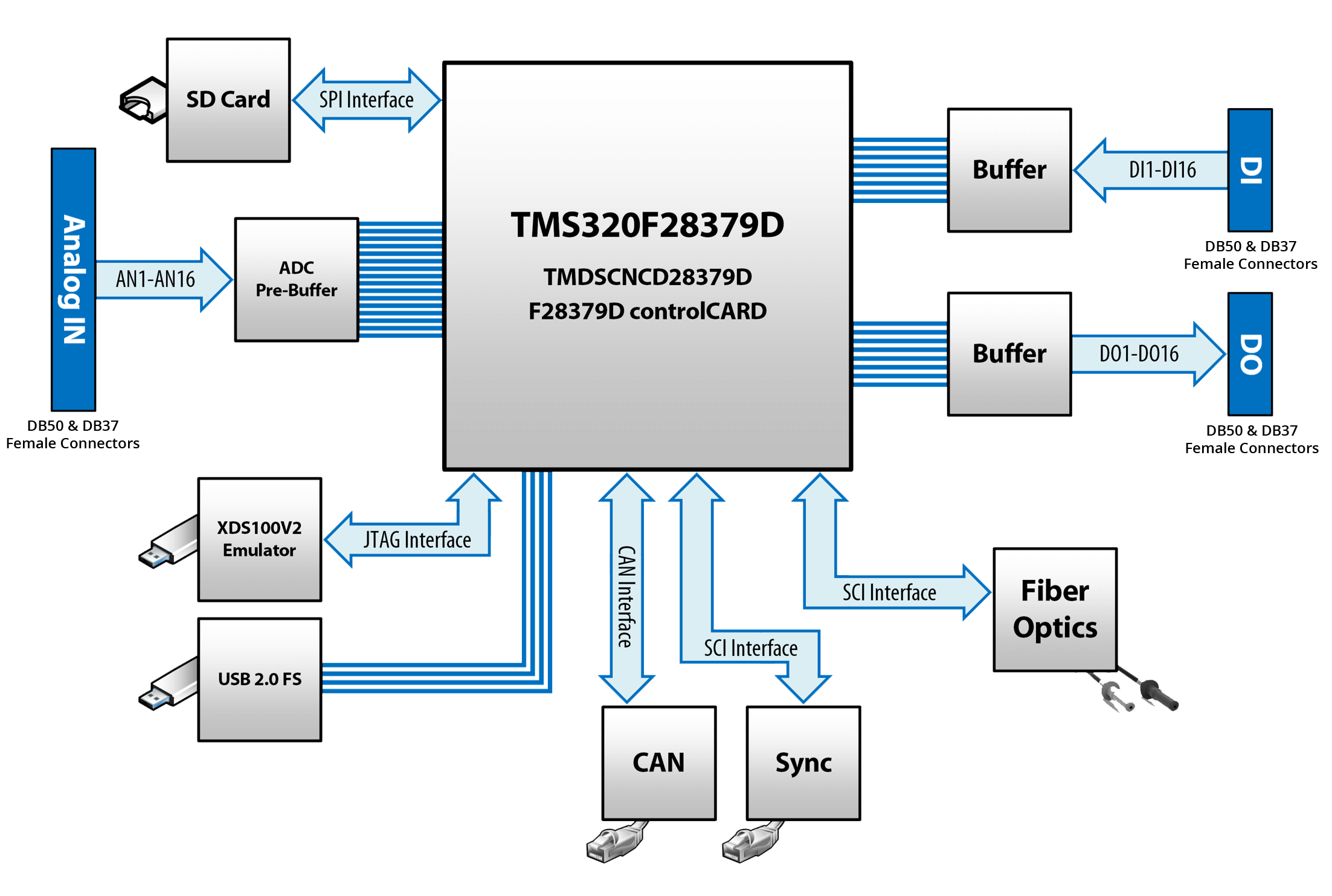High-performance power system simulation tools shorten validation cycles and strengthen reliability across energy infrastructures. Many organizations look to these resources to minimize unexpected outages, stay ahead of emerging grid complexities, and support new technologies such as renewables and advanced control systems. Engineers often face immense pressure to deliver designs on tight schedules, so these specialized platforms provide ways to accelerate modeling, analysis, and testing. Stakeholders from investors to system operators benefit from fast, accurate feasibility checks that reduce capital risk and inform data-driven decisions.
Strategic adoption of these solutions encourages efficient project rollouts and cost-effective operations, especially when high-fidelity accuracy is required. Many businesses also need a scalable approach to handle future expansions, advanced distributed generation, and more robust contingency plans. Selecting an optimal simulator is therefore an important step that can uncover untapped potential and strengthen competitive advantage. Each tool offers unique features, but all share a similar goal of supporting robust analysis and improved design confidence.
1) HYPERSIM
Detailed real-time simulations are a critical component of this platform, which offers multi-core processing for large and small systems alike. Flexible modeling supports complex testing scenarios, including renewable integration and advanced converter designs. Comprehensive debugging and analysis tools permit deeper exploration of model performance under varied operating conditions, ideal for accelerating control system validation. High-fidelity capabilities give engineers a solid foundation for risk assessment. OPAL-RT offers HYPERSIM, a state-of-the-art, extensively field-tested real-time simulation software platform designed for power systems and power electronics, widely used for transient real-time simulation, protection studies, and power system electromagnetic transient analysis.
The ability to replicate conditions with hardware-in-the-loop helps teams mitigate potential issues before large-scale deployment. Through these steps, testing and validation cycles can shrink, leading to lower total investment costs for new projects. System operators also appreciate the potential for safe experimentation with new strategies that might otherwise carry operational hazards. This approach consistently delivers better outcomes and fosters stronger stakeholder buy-in.
2) ePHASORSIM
A specialized real-time simulation software platform dedicated to large-scale phasor-domain power system simulation. It offers detailed transient stability, wide-area grid analysis, and advanced monitoring features, making it suitable for transmission planning and operator training. Engineers often benefit from accelerated validation cycles, as complex scenarios can be modeled quickly to optimize resource planning. OPAL-RT provides ePHASORSIM to help reduce costly surprises in system expansions while increasing confidence in protection schemes.
The platform’s ability to simulate wide-area disturbances in near real-time drives better decision-making across multiple regions. Project teams appreciate how detailed phasor models reveal high-level system interactions without compromising speed. Automated workflows bring extra clarity to reliability studies, improving the odds of successful implementations. The resulting insights inspire data-driven improvements that can strengthen return on investment and grid integrity.
3) RT-LAB
This core software platform supports multiple real-time simulation systems, including eMEGASIM, ePHASORSIM, and eFPGASIM. The flexible environment enables multi-domain power system simulation, control prototyping, and seamless model integration for users seeking a unified development and testing experience. Configurable interfaces handle different model complexities, from rapid prototyping to hardware-in-the-loop validation, accelerating the rollout of innovative solutions. The reliability of RT-LAB helps engineering teams keep projects on schedule while preserving thoroughness in design.
Comprehensive library support reduces time spent building models from scratch, creating a streamlined workflow for power electronics, protection, and large-scale stability studies. Consistent data management across simulation domains eliminates guesswork, promoting consistency within multidisciplinary teams. Tailored reporting and performance metrics ensure transparency for stakeholders who need clear evidence of outcomes. Many appreciate that this software platform fosters adaptability, which becomes increasingly vital in complex power networks.
4) Power Electronics Add-On (eHS) for NI VeriStand
An FPGA-based simulation tool for hardware-in-the-loop (HIL) testing of controllers, suited for power electronics and electric transportation projects. This add-on offers high-fidelity power electronics modeling to complement power system simulations, allowing accurate representation of switching components. Real-time capabilities enhance test coverage for converters, drives, and other intricate subsystems essential to electrification initiatives. Users can achieve reduced development costs by catching potential faults early, ensuring safer deployment of emerging technologies.
The compact design of the FPGA-based solver optimizes system latency, delivering precise waveforms that reflect realistic operating conditions. Engineers often leverage these capabilities to refine controller algorithms before committing to large-scale prototypes. OPAL-RT offers this solution to those who need to accelerate integration between power system and power electronics testing. Collectively, it paves the way for smoother compliance checks, helping organizations reach technical milestones under tight timelines.
5) Real-Time Digital Simulator Hardware Platforms
OPAL-RT provides a range of hardware platforms such as OP5600 V2, OP5650, OP5700, and OP7000 series, supporting real-time power system simulations and HIL testing. These scalable systems accommodate varied project scopes, from single-cabinet solutions to enterprise-level rack configurations. High-performance CPUs and FPGA-based processing ensure accurate transient analysis and precision for protective relays, power converters, and other network elements. Diverse connectivity options make it simpler to integrate the simulator into existing workflows, a priority for teams juggling multiple hardware interfaces.
The modular nature of each hardware platform enables expansions or upgrades without large redesign efforts, preserving cost efficiencies. Advanced cooling and robust design features support stable operation, ideal for lengthy test campaigns under high computational loads. Engineers can rely on consistent performance to streamline validation processes, improving alignment between prototypes and final deployments. This combination of flexibility and power underpins greater confidence in real-time testing outcomes for utilities, OEMs, and research institutions alike.
6) PSS®E
A strong reputation for transmission planning features sets this tool apart, making it a popular choice for organizations aiming to plan expansions. Load flow and short-circuit analyses occur within a consistent environment, allowing for easy data sharing among collaborators. Various add-on modules deliver specialized capabilities, such as contingency analysis or voltage stability assessments. Detailed modeling of network components simplifies the process of identifying reliability issues before implementation.
Large utilities value this solution for its efficient scenario handling, which helps structure resource planning on both immediate and long-term horizons. Faster scenario planning means cost controls remain at the forefront, a priority for executive leadership. Automated processes reduce manual input, limiting error risks and supporting consistent modeling practices across the organization. This leads to smoother alignment among various teams working toward a shared objective.
7) PowerWorld
High-performance interactive simulations define this platform’s approach, allowing visual representations of complex networks. Customizable displays and an intuitive drag-and-drop interface foster faster analysis and broader acceptance among stakeholders. Extensive libraries of equipment models, including generator and load profiles, support accurate replication of operational realities. Time-domain and transient stability modules deliver robust insights for critical event testing.
Teams typically benefit from shortened learning curves and faster time-to-value, which can accelerate design cycles. Visual clarity also helps non-technical stakeholders grasp system intricacies, easing communication about proposed changes. This open exchange of ideas often uncovers opportunities for better allocation of resources and optimized expansions. In many cases, quick identification of feasible solutions leads to enhanced scalability without compromising reliability.
8) PSCAD
Advanced electromagnetic transient simulations give users detailed views of complex events that occur on microsecond timescales. Engineers can integrate controls and power electronics into these models to investigate issues like converter instability or harmonics. Rapid iterative testing helps highlight design flaws early, reducing both development costs and the chance of mission-critical failures. Built-in library components streamline model creation, cutting down on repetitive tasks.
Faster issue resolution reduces downtime in design cycles, a notable advantage when time-to-market is important. Project managers appreciate how it clarifies risk factors, improving project predictability and fostering clear communication with investors. More accurate digital prototypes enable confident planning for expansions or new product launches. This approach frequently results in less guesswork and more robust solutions over a project’s lifespan.
9) NEPLAN
Modular architecture enables users to customize the platform for distribution, transmission, and industrial networks. Advanced planning functions extend to reliability calculations and asset management, which is essential when aiming to reduce operational uncertainties. Built-in optimization tools guide strategies for cost savings while maintaining stability. Detailed harmonic analysis allows for better assessment of equipment compatibility and power quality.
Fewer interruptions in the planning process create direct pathways for better returns on infrastructure investments. Quick detection of potential capacity shortfalls supports more strategic resource allocation, a prime concern for large-scale operations. Grid expansions with minimal complications instill confidence across project teams and expedite overall timelines. Systematic data management further boosts efficiency by maintaining consistency in modeling approaches.

10) CYME
Comprehensive distribution-focused capabilities allow users to evaluate feeder reliability, voltage regulation, and protection coordination in a single environment. Load flow, short-circuit, and arc-flash assessments are integrated into the tool for a well-rounded approach. Detailed device libraries ensure accurate representation of real equipment parameters, a key factor in precise simulations. Scalable modules address anything from microgrid analyses to large utility expansions.
Reduced duplication of effort helps bring down costs, allowing project leads to focus on more nuanced design improvements. Automated reporting fosters clear communication with upper management and external partners. The focus on distribution-level studies enables closer scrutiny of power quality concerns, adding value to the overall user experience. This organized approach can preserve resources and reinforce stakeholder confidence in final outcomes.
11) ERACS
Reliability-centered design stands at the forefront with capabilities in load flow, fault level calculations, and stability analysis. Protective device coordination assists in preventing faults or misoperations that can cause costly downtimes. The platform also offers easy-to-follow schematic interfaces, encouraging faster setup of complex network diagrams. Interfaces for data import from various sources reduce manual data entry tasks.
Clarity in results speeds up the approvals process for new technologies or expansions, which can bolster project momentum. This agility often translates to stronger cost management when deploying capital-intensive upgrades. Automated comparison of multiple scenarios fosters broader insight into potential system vulnerabilities. Those insights empower better decisions that can lead to measurably safer operations and long-term resilience.
12) MATPOWER
An open-source framework provides transparent algorithms for load flow, optimal power flow, and other essential analyses. Researchers and engineers can adapt the code to match specialized needs, offering a high level of flexibility. Quick prototyping of new methodologies becomes possible without heavy licensing costs. The user community contributes to ongoing enhancements, ensuring a wealth of available examples and resources.
This flexibility paves the way for swift innovation, minimizing overhead for initial feasibility testing. Teams can refocus on the bigger picture of optimization and system reliability, rather than wrestling with overly restrictive workflows. The cost benefits make it practical for emerging businesses or academic collaborations exploring cutting-edge solutions. Overall, it supports accelerated research and real-world application testing on a budget-friendly scale.
13) Pandapower
Python-based scripting aligns well with modern data science workflows, linking easily to broader analytics ecosystems. A modular design enables quick customization for specific distribution or transmission modeling tasks. Detailed libraries address widely recognized component models, ensuring realistic simulations. Built-in optimization features streamline load flow analysis, short-circuit calculations, and more advanced tests.
Smoother integrations with machine learning frameworks expand possibilities for predictive maintenance and anomaly detection. This synergy can accelerate the path to market for new ideas, boosting overall productivity. Transparent coding structures help reduce miscommunication among project teams. Adaptable parameter settings also support iterative improvements, providing a strong foundation for ongoing performance gains.
“High-performance power system simulation tools shorten validation cycles and strengthen reliability across energy infrastructures.”
14) eMEGASIM
High-speed real-time simulations unify hardware and software testing, offering precise replication of various network scenarios. Scalable architecture works with multi-core processors and FPGA-based technology for accurate modeling of power electronics. Engineers can execute hardware-in-the-loop setups, verifying designs under realistic stresses before deployment. Detailed data acquisition and logging functions facilitate advanced analysis of system transient events.
Quicker validation of control algorithms often leads to swifter product rollouts and lower capital risk. Teams cut down on repeated lab tests, optimizing resources for high-impact tasks. This approach also opens the door to integrated research on grid stability, storage integration, and distributed generation. The outcome is often more reliable solutions that meet market requirements with less overhead.
15) PYPOWER
A lightweight Python tool built around open-source principles makes this option suitable for smaller-scale power flow analyses. Straightforward scripting supports both educational settings and quick feasibility checks in professional environments. Minimal overhead allows integration into larger Python projects, where simulation might only be one component. The design promotes clarity and ease of modification.
In projects that focus on cost-effectiveness, simplicity often wins, and PYPOWER delivers on that front. Lower maintenance demands also mean less friction for teams dealing with multiple software platforms. This tool’s adaptability encourages iterative improvements without complex licensing constraints. That flexibility helps maintain forward momentum for smaller or specialized organizations working within tight budgets.
16) POWSYBL
An open-source framework focused on large-scale power systems, it supports multi-voltage level modeling. The integrated approach helps unify different grid components under a single coherent platform, easing collaboration. Plug-in architecture offers room for expansions and custom workflows, a useful feature for research institutes and utilities. Built-in contingency analysis and security assessment functionality address pressing reliability needs.
Easier data exchange among different departments helps projects move from concept to approval more smoothly. Fewer data silos mean fewer delays, enabling resource allocation that supports growth ambitions. Reliability analyses carried out in a more transparent manner can attract positive attention from stakeholders. This foundation underpins faster progression toward cost-effective solutions that address new market demands.
17) PSAT
Known for its open-source approach to load flow, time-domain simulations, and small-signal stability, this tool caters to academic and research-oriented users. The interface can adapt to different operating systems and data formats, easing integration challenges. Symbolic manipulation features allow deeper exploration of system equations for advanced control design. The model library helps users quickly build typical system elements without starting from scratch.
Clear insights into system behavior translate to informed project decisions that can steer resource allocation wisely. Timely simulation results help shorten planning phases while maintaining reliable design standards. The community-driven nature of this platform adds a wealth of user experiences to draw upon. Those shared learnings accelerate breakthroughs that might shape next-generation solutions in the energy sector.
18) PyPSA
Full integration with Python data science libraries enhances capabilities for automated workflows, multi-objective optimizations, and scenario management. Open data sources can easily link into the framework, supporting large-scale capacity expansion modeling. The modular design helps expand from fundamental load flow calculations to more advanced tasks such as sector coupling. Support for renewable components and storage systems aligns well with modern grid demands.
Automated workflows can trim labor-intensive tasks, freeing teams to concentrate on strategic planning. Efficient scenario testing helps reveal new revenue streams or system performance improvements. This adaptability often reduces the risk associated with experimental grid configurations. Steady collaboration with a global developer community fosters reliable updates and collective learning.
19) GridLAB-D
A focus on distribution networks shapes the robust load forecasting, voltage regulation, and smart metering options included. Agent-based modeling allows complex behavioral patterns to be simulated, capturing elements like consumer demand response. Time-series data inputs provide hour-by-hour or minute-by-minute granularity, leading to accurate operational insights. The code’s open nature encourages experimentation in advanced grid modernization scenarios.
These granular simulations can showcase cost-saving opportunities in distributed generation or demand response programs. The detailed results often appeal to utility planners who need clarity on consumption trends. Saving on infrastructure upgrades or improving existing assets can produce measurable returns for shareholders. A transparent environment for testing new concepts often leads to more stable outcomes over the long term.
20) OpenDSS
An open-source engine dedicated to distribution system analysis, it excels in detailed harmonic evaluation, load profiling, and transformer modeling. Flexible scripting options permit tailored workflow integration and batch processing for large data sets. Results can be integrated with external visualization tools, offering deeper insights for advanced planning. The software’s approach supports single-phase, three-phase, and multi-phase distribution circuits.
This multi-phase versatility helps keep capital expenditures in check by informing targeted infrastructure upgrades. Automated processes reduce time spent on manual data manipulation, which yields cost savings and faster decisions. Better visibility into power quality concerns also enhances investor trust, facilitating expansions with fewer uncertainties. Consistent performance across varied distribution cases fosters confidence in forward progress.
21) PSpice
A specialized circuit simulator geared toward electronic components, it efficiently handles transient, DC, and AC analyses. Sophisticated waveforms and extensive device libraries provide accuracy in modeling semiconductors and related parts. Engaging visual outputs help engineers interpret results more quickly, supporting streamlined design workflows. Key features such as parametric sweeps and Monte Carlo simulations offer valuable optimization insights.
This focus on electronic device modeling leads to improved reliability in board-level and system-level designs. Teams can tweak parameters rapidly and observe immediate outcomes, saving precious development hours. Detailed insights pave the way for risk reduction in prototypes, often translating into leaner investments for new products. Stakeholders stand to benefit from early detection of design flaws before large-scale production.
22) Multisim
Circuit simulation capabilities enable detailed analysis of analog, digital, and power systems. Interactive testing in a controlled virtual environment offers a clear understanding of potential design pitfalls. Toolbars and intuitive controls reduce complexity for engineers who may be new to advanced simulation. The combination of straightforward user experience and robust features addresses a broad range of project needs.
Accelerated prototyping leads to faster rollouts that can meet strict market demands. Early resolution of design errors helps preserve budgets and maintain confidence among project sponsors. Thorough waveforms and measurement instruments guide developers toward optimal settings with minimal trial-and-error. This efficiency ultimately affects profitability by keeping rework times to a minimum.
23) eFPGASIM (eHS)
An FPGA-based approach delivers ultra-fast real-time simulations for complex power electronic systems. Precise resolution of switching events lets users study converter behavior and advanced control schemes with high fidelity. Flexible tool integration ensures synergy with broader hardware-in-the-loop setups, cutting down on development overhead. Efficient debugging workflows simplify the process of validating new designs in accelerated timeframes.
The measurable impact often shows up as significantly reduced project risk and fewer late-stage revisions. This translates directly into financial benefits, especially for businesses focusing on large-scale conversions or product lines. Rapid iteration fosters creative solutions that address new market opportunities quickly. The dependable real-time accuracy positions organizations for ongoing success in advanced power electronics implementations.
24) ETAP
A comprehensive interface and advanced modeling capabilities help users map out intricate power networks with clarity. Accurate load flow and transient stability analyses offer support for mission-critical operations, which is useful when aiming for shorter development cycles and safer electrical infrastructure. Data validation features and scenario comparisons equip users to identify cost-effective measures for system upgrades. Many appreciate the library of reliable protective device models that streamline coordination studies.
Greater accuracy in these analyses saves time and labor, contributing to measurable gains in project ROI. Engineers often gain the confidence to move forward with solutions that carry less risk, which can influence more informed stakeholder alignment. Reliable automation of tasks also means less manual effort and fewer data-entry mistakes. This leads to faster approvals and higher decision quality under tight deadlines.
25) DIgSILENT
Extensive capabilities for load flow, fault analysis, and harmonic assessments provide a thorough approach to power system evaluation. Dynamic modeling and simulation modules allow engineers to simulate complex interactions, which ensures accurate understanding of system behaviors. The interface supports large-scale projects, making it suitable for organizations seeking advanced workflows. Clear customization options also help project teams tailor models to specific needs without major disruptions.
Time-savings from automated reporting and intuitive scenario switching contributes to efficient resource management. Implementing more consistent modeling across teams can lower operational costs while increasing collaboration. The tool’s advanced stability features reduce guesswork, improving both system reliability and investor confidence. Projects often move faster when everyone trusts the simulations guiding their decisions.
Key Features to Consider When Selecting a Tool

Selecting the right simulator can save significant resources, especially for teams that must balance precision, speed to market, and budget constraints. Decision-makers often weigh customization needs, data handling, and real-time capability to gauge whether the tool will grow with future requirements. Clear reporting functionalities matter for presenting findings to management in a way that speeds up approvals. Software compatibility with other platforms or programming languages is another factor that can streamline integration.
- Comprehensive model libraries: Benefit from quick and accurate system representation.
- Advanced analysis modules: Streamline tasks like fault calculations or optimization.
- User-friendly interfaces: Encourage collaboration and reduce learning curves.
- Scalable architecture: Handle varying system sizes and project needs.
- Real-time capabilities: Enable hardware-in-the-loop and faster control validation.
- Customization flexibility: Adapt parameters for specific design considerations.
Thorough assessment of these elements typically maximizes the long-term return on investment. In many organizations, it also helps align multidisciplinary teams, which is critical for large-scale initiatives. Focusing on the features that truly impact outcomes often leads to solutions that combine cost-effectiveness with technical rigor. This multifaceted approach supports both immediate and future business goals.
“Faster issue resolution reduces downtime in design cycles, a notable advantage when time-to-market is important.”
Applications of Power System Simulation Tools
Many rely on these tools for everything from basic load flow and short-circuit studies to advanced stability and transient analyses. Real-time hardware-in-the-loop setups expand test coverage by replicating real conditions in a safe environment. Cost-benefit assessments also become more precise when detailed simulations illuminate potential pitfalls and highlight optimal configurations. Integrating distributed energy resources, microgrids, and energy storage solutions into existing grids is another significant use case.
Strategic planning at the utility level benefits from thorough reliability analyses, resource scheduling, and contingency planning. Large industrial operations leverage these platforms for better control over internal power distribution and improved power quality. Some sectors incorporate them into research and development cycles to refine advanced control algorithms before deployment. The continuous evolution of power systems elevates the need for robust software that supports iterative improvement and informed risk management.

Tips for Effective Utilization of Simulation Tools
Efficiency and accuracy can skyrocket when teams adopt best practices for setting up, running, and interpreting results. Proper data management and consistent use of standardized modeling approaches remove barriers to collaboration. Regular software updates and ongoing training also keep personnel aligned with features and capabilities. These pointers often lead to stronger returns, fewer delays, and improved stakeholder trust.
- Start with smaller test cases: Validate your setup before scaling up.
- Use version control: Track changes in models to avoid confusion.
- Leverage scripting: Automate repetitive tasks and reduce manual errors.
- Compare scenarios: Gather a range of inputs to see variations in system performance.
- Validate with real data: Align simulations with measurements to improve accuracy.
Cross-functional coordination may be the difference between confident approvals and extended project bottlenecks. Investing time in thorough reviews of simulation results keeps everyone on the same page, preventing costly missteps. Staying organized from the outset also simplifies expansions or upgrades further along. This structured method of utilization frequently translates into better cost controls and more favorable outcomes.
Power system simulation tools serve a pivotal role in modern project development, from handling critical fault analyses to shaping advanced grid expansions. Accurate representation of complex phenomena leads to informed budgeting decisions and shorter review cycles. Many users find that the right simulator not only reduces technical risks but also sets the stage for scalable growth. Executives appreciate the clarity these solutions bring, especially when facing high-stakes investments.
The range of specialized platforms offers flexibility to suit different budgets, operational scales, and technical requirements. Open-source frameworks empower smaller teams or academic researchers, while commercial suites often provide more integrated features for large enterprise deployments. In all cases, well-chosen tools open doors to efficient development, reduced downtime, and strong returns. Careful consideration of key features is an important step toward a future powered by safe, dependable, and profitable systems.
Engineers and innovators around the world are turning to real-time simulation to accelerate development, reduce risk, and push the boundaries of what’s possible. At OPAL-RT, we bring decades of expertise and a passion for innovation to deliver the most open, scalable, and high-performance simulation solutions in the industry. From Hardware-in-the-Loop testing to AI-enabled cloud simulation, our platforms empower you to design, test, and validate with confidence. Discover how OPAL-RT can help bring your boldest ideas to real-time.
Frequently Asked Questions
How do power system simulation tools help optimize costs?
Many platforms include built-in optimization algorithms that reveal efficient configurations or scheduling approaches. Project teams can focus on improvements that deliver quick payback, which saves money and supports better returns for investors.
Are open-source simulation tools reliable for professional projects?
Open-source platforms often boast active user communities that enhance reliability by sharing updates and fixing issues promptly. Many engineers trust these solutions for feasibility studies, research initiatives, or smaller-scale commercial applications.
Which real-time capabilities matter most for hardware-in-the-loop testing?
Simulation speed, FPGA integration, and accurate solver algorithms rank high for hardware-in-the-loop scenarios. This ensures that physical devices receive authentic system feedback during testing without delays or approximations.
Can power system analysis software interface with big data or AI frameworks?
Several advanced tools leverage Python or similar languages to integrate with AI libraries and big data infrastructure. This allows high-volume data processing, predictive modeling, and automated scenario assessments for a deeper level of insight.
What is the advantage of having a detailed model library in simulation software?
Robust libraries support accurate replication of real equipment and network configurations. This improves the fidelity of results and enables more confident decision-making for expansions, grid upgrades, or new technology deployments.





















